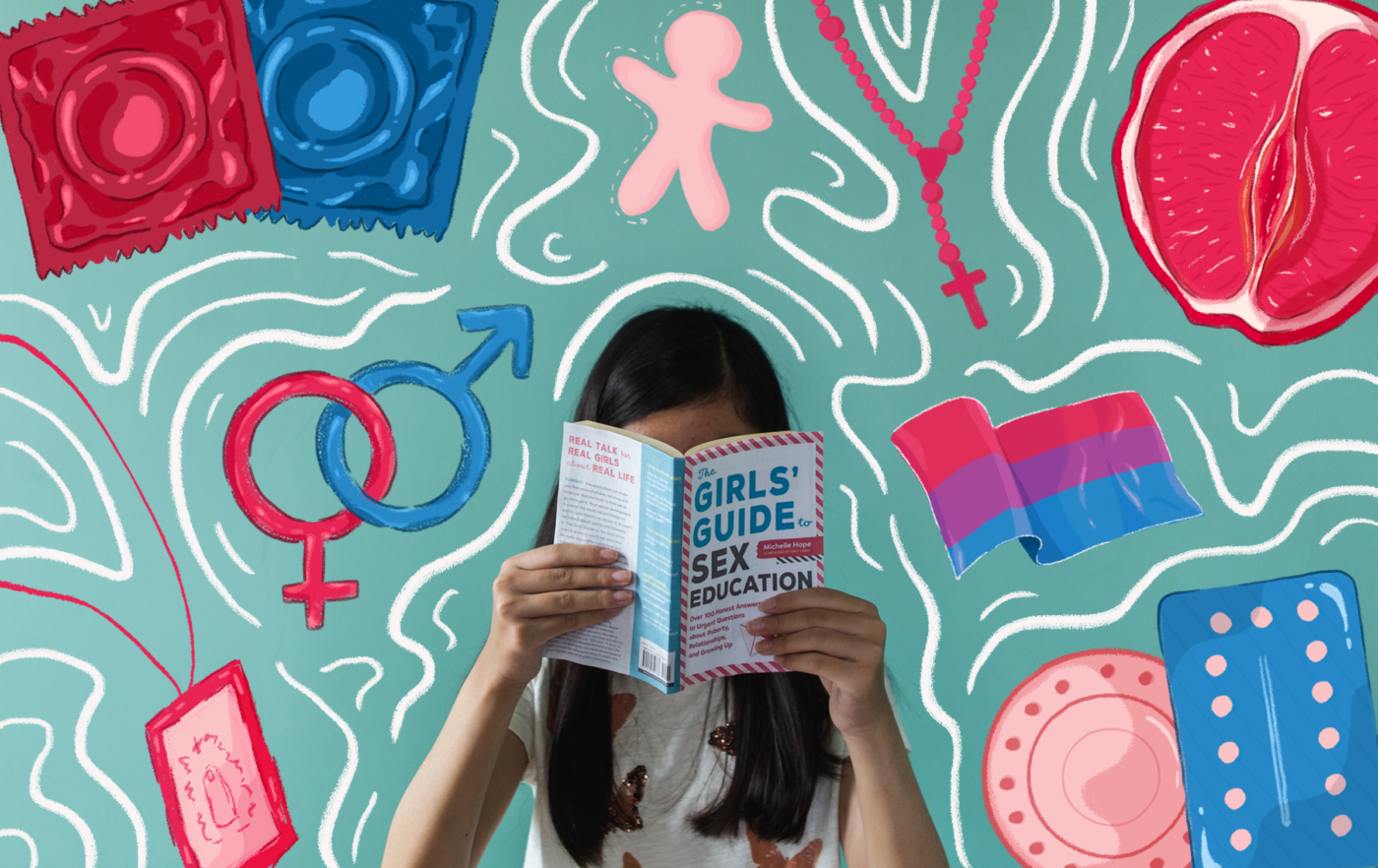IN THE spirit of cura personalis, the Ateneo has advocated for its students to go down from the hill and immerse themselves in their community. However, while trudging down this path, the school often comes across a confusing crossroads—one that entails upholding both the needs of its increasingly progressive generation and its conservative Catholic traditions.
As the Ateneo community recently commemorated the second year anniversary of the indignation protests against sexual misconduct, there is a strengthened call to examine the current state of gender sensitivity and responsiveness in the University. This likely means finding the balance between its roots in Jesuit tradition.
Uncertain spaces
For students like Beatris Cabana (3 AB IS), topics such as gender and sexuality were spoken in hushed tones growing up. Raised in a conservative and religious household, she was made to believe that mere discussions on sex and sexuality were sinful. Thus, conversations regarding sexuality were associated with shame and unease.
After coming of age and destigmatizing these terms, she began to harbor less prejudiced views on matters relating to gender and sexuality. Now, she stresses the need to break the “communication barrier” among the youth and their community when discussing these topics.
For Cabana, this entails having open discussions while also accommodating a person’s moral background. She recognizes that creating these “positive conversations” surrounding gender and sexuality would lead to an open community”where people can better make sense of varying experiences and opinions.
Platforms that encourage these conversations find relevance in the Loyola Schools (LS) community, as members continue to discuss gender and sexuality on public platforms such as the ADMU Freedom Wall. According to Sanggunian Commission on Gender Equality Commissioner Althea Santos, this is because LS students feel the need to take advantage of their newfound sexual freedom, being on the brink of their adolescent years.
Unfortunately, some of these conversations may involve unpleasant experiences. Santos looks back on how students were often engaged in locker room talk, clothing-based discrimination, and misgendering while classes were held on-site.
Sexual misconduct is an equally pressing issue. According to Santos, the prevalence of University sexual misconduct cases fosters a predatory environment within the LS, which makes students feel unsafe.
According to Santos, the shift to an online set-up does not exempt students from experiencing sexual harassment cases. While students are less likely to experience physical sexual assaults, various media platforms provide an avenue for perpetrators to get sexually explicit content and materials across. In the LS, these are made evident with posts coursed through the ADMU Freedom Wall detailing the inappropriate sexual behaviours students experience during online bonding sessions.
Sexuality education at present
Sexuality education (SE), whose main thrust is to lay the groundwork for healthy, responsible sexual and social behavior among adolescents, touches on matters relating to sexual misconduct. To do so, it covers an array of topics such as sexuality, sexual identity, relationships and intimacy, gender identity and roles.
The LS embeds aspects of SE with an array of formative courses in the core curriculum. Behind this education is the Commission on Higher Education Memorandum Order No. 1 Series of 2015, which mandates higher education institutions to integrate principles of gender equality in their curricula, research programs, and extension programs.
Currently leading these efforts is the Loyola Schools Gender Focal Point (LS-GFP) Committee. Amid cases of sexual misconduct in the LS, LS-GFP Committee implements “preventive mechanisms” against sexual misconduct, while other University Decorum and Investigation System offices are are tasked to investigate sexual harassment cases.
According to LS-GFP Committee Co-Chairs Jessica Claudio and Isabel Nazareno, the present general aim of sexuality education in the LS is to promote gender mainstreaming—an approach that considers all genders’ viewpoints—within the curriculum.
Within the LS, such topics are taught through the Introduction to Ateneo Culture and Tradition Program. The year-long program assists freshmen’s transition to the Ateneo college life, presenting them with modules on sexual boundaries and zero-tolerance policies against gender-based discrimination.
Apart from the formation program, topics centered on gender and sexuality are also touched on in Understanding the Self (SocSc 11). Here, freshmen learn to understand the relationship between “the self” and its environment.
However, according to Santos, sexual orientation, gender identity, and expression -related topics in SocSc 11 are not standardized. As such, only a portion of these professors take initiative to extensively discuss such topics.
With that, Claudio and Nazareno stress how the LS-GFP committee is currently formulating ways gender can be “more intentionally integrated” in Social Science courses. As such, the LS-GFP committee is assessing what gender and gender-related topics are currently in the core curriculum and how these topics can be “ladderized” within the proper framework of their respective courses.
Furthermore, the LS-GFC committee encourages the various departments to create interdisciplinary electives on gender. In strides forward, the LS-GFP committee is also reviewing proposals to establish a minor in Gender Studies. The Sociology and Anthropology Department has expressed its desire to head this initiative in consultation with the LS-GFP.
Treading the line
Catholic institutions profess that SE, compared to traditional sex education, is highly explicit. As SE places great emphasis on healthy sexuality, it may likely introduce the language of sex and sexuality among the youth and encourage experimentation with aspects of human sexual behavior.
For Theology Professor Javier Galvez, the inclusivity of gendered topics is also seen as a “threat” to the Church’s teaching of matrimony. Thus, Galvez says theology professors “have a bit of a delicate line to tread” between complementing the progressive perceptions on gender and sexuality while staying true to the school’s Catholic roots.
These professors have turned to the Pontiff himself, who has become a proponent of “mainstream Catholicism,” an approach more toleranting towards issues affiliated with sexuality.
“What that means in terms of gender and gender equality is that Pope Francis has really encouraged people to look first at the person involved before looking at the teachings,” says Galvez.
As such, Theology courses in the LS seek to provide clarity for students to understand the “reality over ideas”—tackling such issues not as chatechatetical debates, but as experiences and phenomena those in the community deal with. Ultimately, it equips students to ask the right questions, to seek right answers, and to essentially “theologize.”
However, attributing this method of teaching as a response to the sex and gender positive movement within the LS is an oversimplification. Instead, it is meant to engage with the “signs of the times” and to keep up with the global trend of the Church in matters concerning sex and gender equality. This ideology is echoed in Jesus Christ’s call to “love thy neighbor,” especially towards marginalized persons.
In response to grievances over dogmatic approaches on SE topics, Galvez says, “It has been a challenge when [students] come across more established mindsets, so to speak, so I think there’s just a need for level-headedness. In some sense, we also have to allow time to play its part.”
Ultimately, it is the encouragement of dialogue from all sides that proves promising in the teaching of SE for Claudio, Nazareno, and Galvez. According to Galvez, only when the LS sees issues centered on sex, gender, and sexuality as disproportionately affecting each member of the school, can it understand the value SE aims to impart. Students then become educated with more than just words and concepts, but in a love for their community.







